
 |
CHANGE FOR THE BETTER
Techies into social activismWhen science meets social activism, it can bring lasting change to the lives of the most vulnerable and marginalised people in the world states Bhanu Priya Vyas
The OSDD platform, which uses online crowd sourcing to discover new and indigenous drugs, has come up under the leadership of veteran scientists like Dr Samir Brahmachari, Dr T.S. Balganesh and Zakir Thomas. Disturbed by the fact that no new drugs had been discovered to treat tuberculosis, the global pandemic that kills nearly one person every 25 seconds, the illustrious researchers came up with a workable solution in 2008 in the form of the OSDD, which today has transformed into a "Facebook-like virtual directory of experts who develop lifesaving drugs". now, the SmartCane can be bought from one of the 30 regional centres run by organisations working with the visually impaired across the country for Rs 3,000. It is also available for a subsidised rate of Rs 400 through donations," informs Paul. Although the device is gender neutral, Paul believes that it can empower visually impaired women, who bear the "burden of dual disability". He observes, "Visually impaired women are generally confined to their homes as family members are wary of sending them out alone. This, in the long run, diminishes their self-confidence and the ability to negotiate with the outside world on their own terms." For young women like Kalra or
the Mumbai-based Indirani
Sankari, who "feels great" that she
is able to move around
independently, the SmartCane is a
real boon. When Kalra traverses a
distance of nearly 30 kilometres
one-way everyday, braving unruly
crowds on the city transport, to
reach her workplace in south
Delhi, she feels a sense of
happiness. "I am no longer scared
of stepping out alone, day or
night," she smiles. The OSDD platform, which uses online crowd sourcing to discover new and indigenous drugs, has come up under the leadership of veteran scientists like Dr Samir Brahmachari, Dr T.S. Balganesh and Zakir Thomas. Disturbed by the fact that no new drugs had been discovered to treat tuberculosis, the global pandemic that kills nearly one person every 25 seconds, the illustrious researchers came up with a workable solution in 2008 in the form of the OSDD, which today has transformed into a "Facebook-like virtual directory of experts who develop lifesaving drugs". Explains Bhardwaj, who works with the Industrial Council of Scientific & Industrial Research, "The OSDD has over 7,000 members, including 1,000 active members. They share their published work, which we assess independently by performing the said experiments in our partner laboratories. Once the verification is complete we move on to the next step towards drug discovery." The main purpose of all this is to do away with the Intellectual Property (IP) model of research followed by the established pharmaceutical companies. "Our website uses a common licence model wherein all the work shared belongs to everyone," adds Bhardwaj. This, in turn, speeds up the process of research. Currently, the group is in Phase Two of clinical trials for discovering an effective TB drug.
People assume that where there is a toilet, there has to be water. "That is the mindset we seek to change. With Zerodor, we can completely do away with flushing," Prof. V. Chariar says. And the best part is that it is low cost, low maintenance and can be retrofitted. Installation of Zerodor urinals can cost anywhere between Rs 2,500 and Rs 3,500. Their future plans involve customising this technology for women's public toilets. communities. A simple process of information gathering and relay has been adopted, central to which is an interactive voice response (IVR) system. When people call the toll free Gram Vaani number of their region they are connected to the IVR that gives them the option of either leaving information or listening to relevant news. What is unique is that it is the people who power this voice database – they provide the updates related to various government schemes or diseases in the area, which are replayed for those calling in for relevant information. "On the one hand we are sensitising users on how they can use this service and on the other we are building resource partners who can act upon the grievances raised," says Seth. One key area in which this information sharing has had a positive outcome is addressing the issue of safe motherhood. As part of a special campaign women were motivated to rate their primary health centres (PHCs) on the basis of services provided. This allowed them to decide where to go to get the best treatment while the authorities are trying to improve the poor performing PHCs. As far as innovations go, the one that is being promoted by Prof Vijayaraghavan Chariar of Ekam Eco Solutions has the capacity to solve India's acute problem of poor sanitation. Speaking of waterless urinals, Zerodor, made by IIT-ian Uttam Bannerjee, Prof Chari says, "The technology could enable India to address the twin challenges of ensuring sanitation for all and conserving water which is becoming a scare resource." People assume that where there is a toilet there has to be water. "That is the mindset we seek to change. With Zerodor, we can completely do away with flushing," he adds. And the best part is that it is low cost, low maintenance and can be retrofitted. Installation of Zerodor urinals can cost anywhere between Rs 2,500 and Rs 3,500. Their future plans involve customising this technology for women's public toilets. Clearly, when science meets social activism, it can bring lasting change to the lives of the most vulnerable and marginalised people in the world. (© Women's Feature Service) |
|


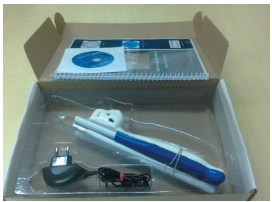 The SmartCane comes fitted with an
electronic device that uses
ultrasonic ranging to detect objects;
it has an ergonomic grip
and a in-built rechargeable battery
that provides a 10-hour back up.
The SmartCane comes fitted with an
electronic device that uses
ultrasonic ranging to detect objects;
it has an ergonomic grip
and a in-built rechargeable battery
that provides a 10-hour back up.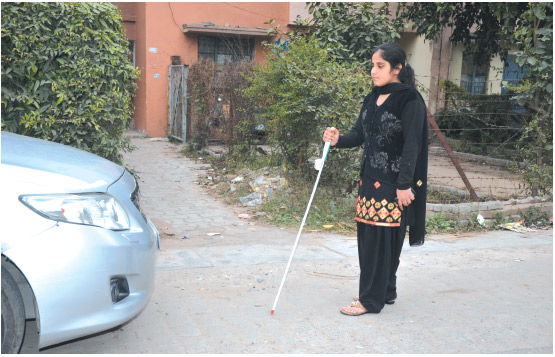 SmartCane is the brainchild of
Indian Institute of Technology (IIT)
alumnus, Dr Rohan Paul.
SmartCane is the brainchild of
Indian Institute of Technology (IIT)
alumnus, Dr Rohan Paul.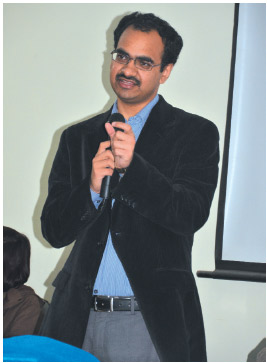 SmartCane is the brainchild of
Indian Institute of Technology (IIT)
alumnus, Dr Rohan Paul.
SmartCane is the brainchild of
Indian Institute of Technology (IIT)
alumnus, Dr Rohan Paul.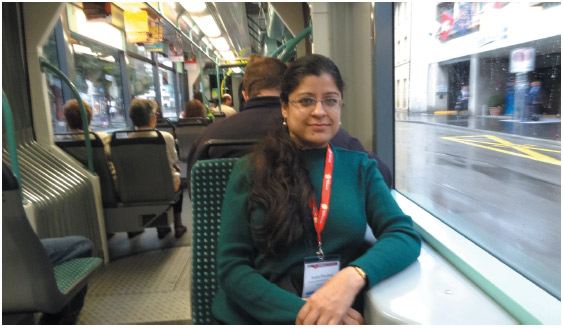 Dr Anshu Bhardwaj is responsible for the design and implementation of the
online platforms of Open Source Drug Discovery (OSDD).
Dr Anshu Bhardwaj is responsible for the design and implementation of the
online platforms of Open Source Drug Discovery (OSDD).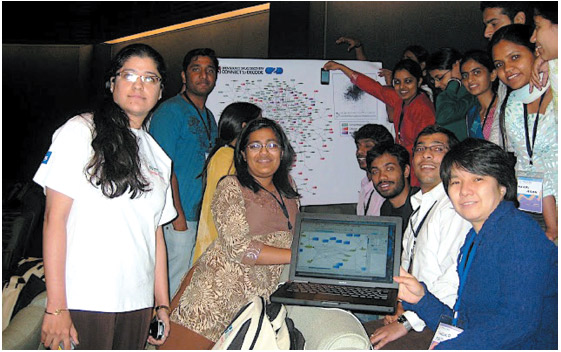 The OSDD has over 7,000 members, including 1,000 active members, which
are part of a Facebook-like virtual directory of experts who develop lifesaving
drugs.
The OSDD has over 7,000 members, including 1,000 active members, which
are part of a Facebook-like virtual directory of experts who develop lifesaving
drugs.